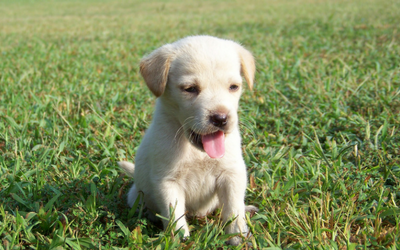
March 23rd is National Puppy Day! Any time of the year is a great time to bring a puppy into your home, but spring and fall are popular times of year for new puppies. Preparing your home for that bundle of fur is an important step to take BEFORE the puppy comes home!
Getting a puppy is an exciting time for everyone in the house, including the puppy, so ensuring that your home is ready for the new arrival will be easier for everyone – puppy included. A successful transition to a puppy home starts with puppy proofing, much like child proofing your home!
Out of Sight, Out of Mind!
Puppies are curious by nature. While encouraging curiosity and play prevent boredom in your puppy, your brand new shoes are probably not exactly what you have in mind when it comes to play! Anything that your puppy can sink his tiny teeth into needs to be removed from rooms that your puppy has access to. Gloves, shoes, hats, and children’s toys are all interesting to a puppy. Even a hat hanging on a doorknob is not safe! A puppy may see a dangling hat as a challenge, and with perseverance may just knock it down for a nice chew session. Be sure to keep such tempting items away in closets or on high shelves.
Remove Delicate Items and “Batten Down the Hatches”!
Everyone has seen puppies madly running around a house or outside (known as “zoomies”). Unstable furnishings, breakable vases at the edge of a table, and grandma’s breakable antiques are likely to be impacted when your puppy has a case of the zoomies! These items are probably better suited in an off limits room until your puppy knows that zoomies are only allowed outside. Consider setting up baby gates or an enclosure to keep your puppy contained in an area that is completely puppy proofed until your puppy is trained.
Garbage, Cleaning Supplies, and Food, Oh My!
Garbage smells terrible to humans, but delicious to a puppy! Chicken bones, high fat food scraps, and plastic wrap are a potential hazard. Vomiting, diarrhea, and pancreatitis can result when your puppy eats garbage, and he can choke on plastic bags or plastic wrap. Make sure garbage is well secured. Cleaning supplies should be kept in high cupboards, or use childproof latches. Keep the puppy in an enclosure or his crate while cleaning, as cleaning chemicals can easily get into a puppy’s eyes and the vapors can cause harm to a puppy’s lungs. Many human foods are toxic to pets. Chocolate, coffee, onions, garlic, and candies contain chemicals that can be deadly. Keep snacks far out of reach of puppies – you would be surprised how high a puppy can jump to reach a tempting human treat! Keep puppy food and treats in tightly sealed containers. Not only could your puppy over-indulge if he were able to access these foods, but he could choke on the plastic that the food and treats are in.
The Great Outdoors!
Check your property for potential hazards. Get down to your puppy’s level and see if there are potential escape routes under or through fences and gates. If your curious puppy catches the scent of a critter that has roamed your yard or garden, he will likely ignore your calls to stay. Remove or isolate rock and wood piles – unsteady piles can trap or cause injury to a curious pup. In your garage, shed, or pool house make sure to place hazardous items such as antifreeze, gasoline, pesticides, and pool chemicals on high shelves, or better yet, restrict your puppy’s access to these buildings. Be aware of the wildlife in your area. Different regions have different threats to your pup. Supervise “free-play” if there are known predators in your area, especially during dawn and dusk when these animals tend to be prowling about.
Taking these steps to ensure the safety of your new puppy is a great way to introduce your family to the responsibilities of having a pet. If everyone helps to prepare, and maintain a puppy friendly home, you will give your puppy a happy beginning with his new family.